The autumnal colours of deciduous trees are one of the big natural spectacles of the year. Love or hate the term, the US idea of ‘leaf peeping’ has started to be taken up in the UK. Whatever you call it, it’s a great idea to get out and enjoy the warm colours in a forest or woodland near you. But what’s the biology behind this great change?
Why do leaves change colour in autumn?
Autumn leaves by Nico Cavallotto CC BY-NC-ND 2.0
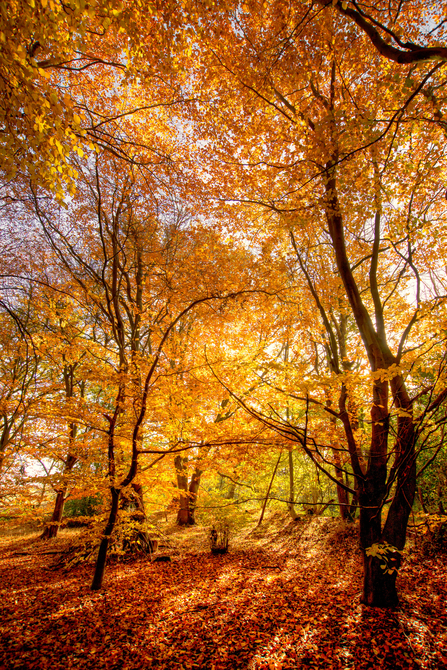
Autumn beech by Don Sutherland
Why trees lose their leaves in autumn
Most of us will be able to dig into our memories of science at school and remember that the green colour in plants’ leaves comes from chlorophyll, the chemical that enables the plant to use energy from sunlight to convert carbon dioxide and water into carbohydrates – that is, into food that enables them to grow. Leaves are ‘basically the kitchen staff of the tree’, as botanist Peter Raven puts it.
In the spring and summer, trees take advantage of the daylight and warm weather to produce as much food as possible. But as we head towards winter there is less light available, and trees’ leaves aren’t built for cold weather.
Like herbaceous plants, the leaves of deciduous trees are not frost hardy – if the water inside the cells freezes, the cells will rupture and the leaves irreversibly damaged. So trees retract as much of the good stuff as they can, and shed their leaves.
It’s an active process that the plant uses to protect itself – it also helps protect the tree from being blown over in the windier winter months!
Why do leaves change colour in autumn?
The shorter days trigger hormones that start a process called abscission (a word with the same root as scissors). A special layer of cells at the base of the leaf stem gradually weakens, allowing it to drop.
At the same time, the tree reabsorbs as many nutrients as possible to store in its roots.
As chlorophyll is broken down and reabsorbed, yellow pigments become visible that were in fact there all along, and red pigments are produced. As you will have noticed, the leaves of different species turn different colours due the varying amounts of chlorophyll residue and other pigments. But weather also affects the colour change. Let’s look at this in more detail.
Why are some leaves red, others orange and others brown?
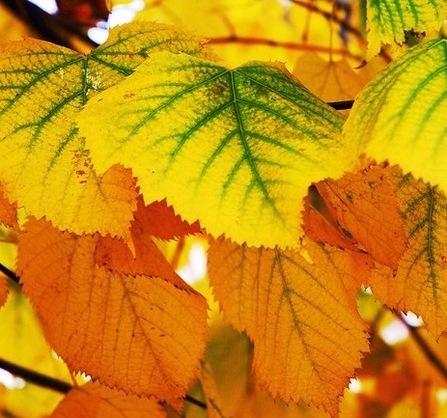
Autumn leaves by Nico Cavallotto CC BY-NC-ND 2.0
Yellow and orange – this is the colour of carotenoids, which are usually masked by chlorophyll. Carotenoids are the same pigments that give things like carrots and egg yolks their colour! Low temperatures destroy chlorophyll, so frosty nights promote yellow leaves.
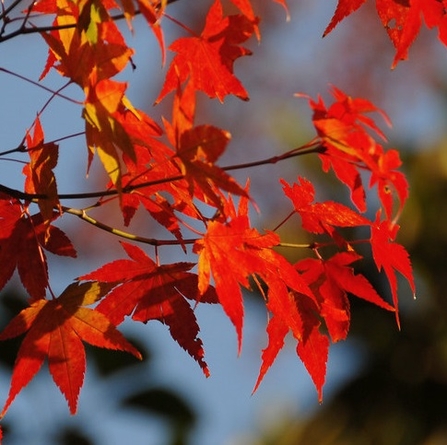
Red maple leaves. Picture: Mal B CC BY-ND 2.0
Red and purple - these are caused by anthocyanins. When sugars that haven’t been reabsorbed yet get trapped in the leaf, they are eventually turned into red anthocyanin pigments. This usually happens in dry weather, when the temperature stays above freezing. But frost weakens anthocyanins, so we see fewer red leaves in cold seasons.
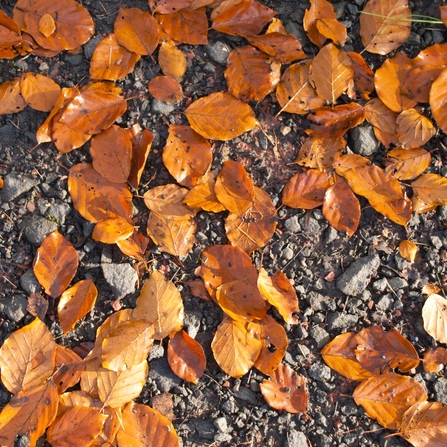
Fallen leaves by Katrina Martin/2020Vision
Brown – this is the colour of the cell walls when the leaf is completely dried out and is ready to fall.
More reasons leaves change colour in autumn
It’s also possible that trees actually benefit from autumn leaf colour change. Studies have shown that anthocyanins protect the leaf against too much light in low temperatures, allowing the leaf to reabsorb nutrients more efficiently.
It’s also been suggested that red leaves can be signals to parasitic insects that use trees as hosts in winter. Brighter leaves signify higher levels of chemical defences against insects, and apple trees that develop red leaves have been observed to end up with a lower parasitic load.
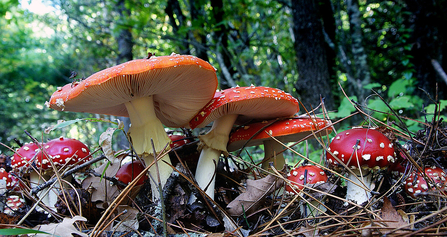
Fly agaric mushrooms growing in leaf litter. Picture: Bernard Spragg CC PDM 1.0
Why fallen leaves are good for wildlife
After the leaf has fallen, the tree seals the cut to prevent infection. Trees go into dormancy to survive the winter in a process parallel to animals’ hibernation. Everything in the tree slows down - its metabolism, energy consumption and growth – and the plant lives off the food stored in summer.
And what about all those fallen leaves? Leaf litter plays an important role in a deciduous woodland. The decomposing leaves release nutrients back into the soil, which will be recycled in the coming years. That thick, springy layer of leaves underfoot also acts as a mulch, sealing in moisture.
It also provides great nesting material and the perfect habitat for worms, snails, spiders, and decomposers like fungi and bacteria. So, if you find your garden filling up with leaves, why not leave a pile in the corner?




